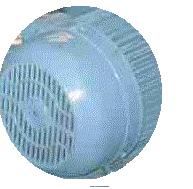
Quick hits to look out for
- The most obvious thing: is the driven equipment doing a useful job, or running idle for example? If so, consider time switching or automatic stop/start control (this might include motor load sensing).
- Do you have oversized motors? Hint: you can find out by noting the current and applying the formula √3 x amps x volts x PF / 1000 which gives actual power in kilowatts. PF represents power factor: assume 0.9 (see note 1). Compare the result with the motorís nameplate rating to see if it is only part-loaded.
- Unusually hot or noisy gearboxes indicate frictional energy losses: thermal imaging equipment can help.
- Are V-belts worn or slack?
- Are pulleys and couplings properly aligned?
Common Opportunities
- Substitute a high-efficiency motor when replacement is necessary.
- Change pulley ratios to run driven equipment at optimum speed.
- If a motor permanently lightly-loaded, switch to permanent star connection or fit a smaller motor.
- On a part-loaded multi-belt drive, remove one or more belts to leave only the minimum required for the power actually being transmitted.
- Consider variable speed drive or multi-speed motor depending on the circumstances
- Where the duty toggles between high and low load, consider replacement with a multi-speed motor (up to four load steps may be accommodated by MSM).
- When V-belt pulleys need replacing, opt for wedge belts (2% improvement) or synchronous, flat, or ribbed belts (5-6% improvement).
- Where possible replace gearboxes with variable-speed direct drives
- Adopt high-performance lubricants
Further information
Try the simple exercise on sequencing a group of variable-speed fans.Siemens offer a savings calculator for motors and drives. View details...
Note 1: (with thanks to Nick Osmaston) the power factor could easily be lower than 0.9, and indeed the more oversized the motor, the lower the power factor. This means that the simplistic assumption of 0.9 almost invariably understates the problem. Nick suggests if you want to be sure, use a proper power analyser like the Hawk.